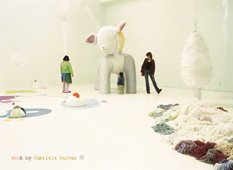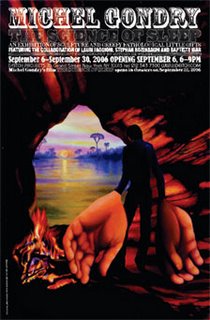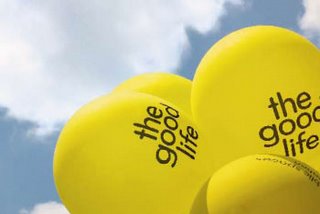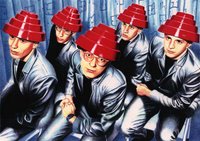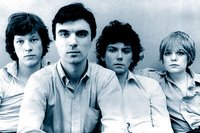Es un gran orgullo recibir cada semana los textos de mi prima Martha Chapa, la mujer manzana. Ella siempre ha sido un ejemplo a seguir y es por eso que la promociono en este espacio.
La Manzana FlechadaESCRITOR Y LUCHADORpor
Martha Chapa
8 de septiembre de 2006

En un país como el nuestro, con bajos índices de lectura, muchas veces nos acercamos a la obra de un escritor y e incluso tomamos nota de su existencia gracias al cine.
Ahora, de nueva cuenta tengo presente ese fenómeno de comunicación debido al lamentable deceso del escritor egipcio Naguib Mahfuz.De hecho, este autor se dio a conocer principalmente en nuestra tierra en 1988, cuando obtuvo el Premio Nobel de Literatura, pero su presencia vino a reforzarse con dos películas mexicanas que se basaron en sus libros: Principio y Fin, de Arturo Ripstein, con guión de Paz Alicia Garcíadiego, y El callejón de los milagros, de Jorge Fons, con guión de Vicente Leñero, producidas en 1993 y 1995, respectivamente.
Sin duda, en ambos filmes se refleja la riqueza de las historias y personajes creados por Mahfuz y, hay que reconocerlo, también se trasluce esa especie de síndrome de escepticismo y desencanto respecto a la naturaleza humana que tanto aparece en hombres y mujeres de letras, sobre todo en la parte final de su vida.
Naguib Mahfuz es el único escritor egipcio que ha obtenido el Nobel de Literatura, galardón que le fue otorgado, a decir del propio jurado, por haber logrado elaborar un arte novelístico árabe con validez universal. Entre sus obras destacan –además de las dos llevadas a la pantalla grande– las novelas que componen la llamada Trilogía de El Cairo: Entre dos palacios (1956), La azucarera (1956) y Palacio del deseo (1957), así como Chicos de Gebelawi (1959), El ladrón y los perros (1961) y Miramar (1967). Los hijos de nuestro barrio, publicada por entregas en un diario egipcio en 1959, le valió tanto el reconocimiento mundial como la sentencia a muerte decretada por el líder islamista Abdel Rahman (hoy en prisión por el atentado de las Torres Gemelas de Nueva York en 1993).
Su trabajo literario abarca también el relato, la novela histórica y artículos periodísticos. Además, se reconoce su aportación como filósofo e historiador, especialista en literatura medieval y arábiga, y se le considera el mayor cronista de su tierra natal, tan deslumbrante en su cultura pero sellada por la pobreza.
A través de sus páginas se reafirma su compromiso con la paz, la libertad, la justicia y la democracia, posición que en este mundo absurdo generó rencores y franco odio de grupos fundamentalistas del Islam. Cabe recordar que Mahfuz otorgó su firme apoyo al tratado de paz entre Egipto e Israel en 1979 y por ello fue incluido en las listas negras de varios países árabes. De hecho, en 1994 un integrista islámico intentó asesinarlo y le infligió heridas en el cuello que le provocaron graves daños en la visión y la audición, además de parálisis del brazo derecho; jamás logró recuperar la salud por completo después de tal atentado.
Así que este talentoso escritor debe ser apreciado por su maravillosa obra, pero también como un luchador y defensor de los derechos humanos.
De modo que extiendo mi invitación a que, además de ver buen cine, leamos más, sobre todo buena literatura, por lo pronto la creada por el gran Naguib Mahfuz.
e mial: enlachapa@prodigy.net.mx
www.marthachapa.net

